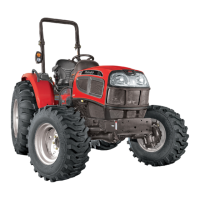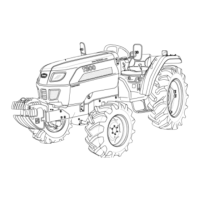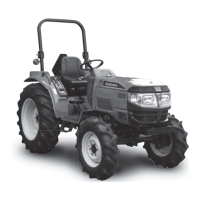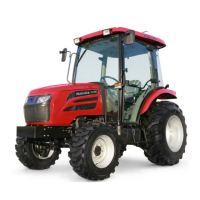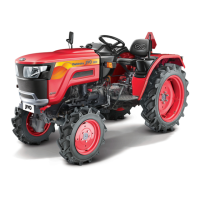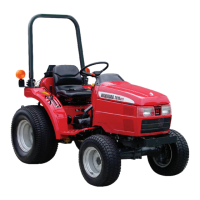53
60 Series 2WD/4WD, Model - 8560
Pneumatic Tires
Care of Tires
Cuts in tires should be repaired immediately. If Neglected,
it will decrease the tire life. Avoid stumps, stones, deep ruts
and other hazards. Keep tires free from oil and grease as
both destroy rubber. After using the tractor for spraying,
wash off any chemicals that may be left on the tractor and
tires.
Shipping Tractors Equipped with Pneumatic Tires
When tractors are transported on a carrier, inflation
pressure should be as follows to make possible rigid
blocking and to prevent bouncing.
2WD 4WD
Front 28 PSI 26 PSI
Rear 20 PSI 20 PSI
Tire Protection during Storage
When not in use the tractor should be stored where the
tires are protected from light. Before storing the tractor
clean the tires thoroughly. Jack up the tractor so that the
load is off the tires when it is to be out of service for a long
period. If it is not jacked up, the tires should be inflated at
regular intervals. Before putting the tractor in service,
always inflate tires to the correct operating pressures.
Do not load tires beyond their rated capacity.
Mounting Tires on the Rim
After mounting a new or old tire on the rim, inflate it to
30 p.s.i. pressure to seat the tire bead on the rim flange
and to prevent the tire from creeping and shearing off the
valve. Then deflate or inflate tire to correct operating
pressure.
Do not inflate a steering tire above the
manufacturer’s maximum pressure shown
on the tire or beyond the maximum shown
in the tire pressure and load Chart A-1. If
tire is not marked with the maximum
pressure.
Never inflate a traction tire (front tire on a
four wheel drive tractor or any rear tire) over
35 psi (2.4 bar). If the bead does not seat on
the rim by the time this pressure is reached,
deflate the tire, relubricate the bead with a
soap/water solution and re-inflate. Do not
use oil or grease. Inflation beyond 35 psi
with unseated beads may break the bead or
rim with explosive force sufficient to cause a
serious injury.
After seating the beads, adjust inflation
pressure to the recommended operating
pressure.
Do not re-inflate a tire that has been run flat
or seriously under-inflated until it has been
inspected for damage by a qualified person.
Torque wheel to axle nuts to specification
after re-installing the wheel. Check nut
tightness daily until torque stabilizes.
Ensure the jack is placed on a firm, level
surface.
Ensure the jack has adequate capacity to lift
your tractor.
Use jack stands or other suitable blocking to
support the tractor while repairing tires.
Do not put any part of your body under the
tractor or start the engine while the tractor
is on the jack.
Never hit a tire or rim with a hammer.
Ensure the rim is clean and free of rust or
damage. Do not weld, braze, repair or use a
damaged rim.
Do not inflate a tire unless the rim is
mounted on the tractor or is secured so that
it will not move if the tire or rim should
suddenly fail.
When fitting a new or repaired tire, use a
clipon valve adapter with a remote gauge
that allows the operator to stand clear of
the tire while inflating it. Use a safety cage,
if available.
Inflating or servicing tires can be dangerous. Whenever
possible, trained personnel should be called in to service or
install tires. In any event to avoid the possibility of serious
or fatal injury, follow the safety precautions below:
Upon receiving your tractor, check the air pressure in
the tires and recheck every 50 hours or weekly.
When checking tire pressures, inspect the tires for
damaged tread and side walls. Neglected damage will
lead to early tire failure.
Inflation pressure affects the amount of weight that a
tire may carry. Do not over or under inflate the tires.
Never attempt tire repairs on a public road or highway.
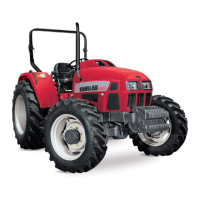
